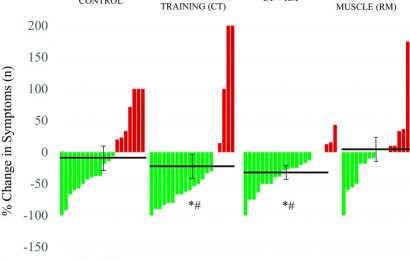
Dr Joel G. Ray
In low-income urban areas of Canada, newborns of immigrant women have a lower risk of severe neonatal morbidity and mortality (SNMM) than newborns of nonimmigrant women, data suggest.
In a population-based cohort study of more than 400,000 live births, the rate of SNMM was 49.7 per 1000 live births among immigrants and 65.6 per 1000 live births among nonimmigrants. The risk varied by country of origin and declined with shorter duration of residence before the index birth.
The “healthy immigrant effect” may play a role in the findings, according to the authors. “Immigrant females who are healthier and more resilient may be most capable of migration; the immigration policy of a host country may preferentially select healthy immigrants,” they write.
Nevertheless, pregnancy-improving strategies like those offered to immigrants, including targeted screening and surveillance, should also be offered to Canadian-born women in low-income urban areas, principal investigator Joel G. Ray, MD, clinician–scientist at St. Michael’s Hospital, Toronto, Ontario, Canada, told Medscape Medical News.
The study was published online April 17 in CMAJ.
Immigrant Risk Varies
The investigators analyzed administrative data on all in-hospital live singleton births at 20 to 42 weeks’ gestation between 2002 and 2019. The mothers were nonrefugee immigrant and nonimmigrant women living in low-income urban neighborhoods in Ontario.
The study’s primary outcome was an SNMM composite that included 16 diagnoses, including neonatal death, and seven procedures related to various body systems. The investigators recorded outcomes at the index admission and up to 27 days after birth.
The study population included 148,050 live births among immigrant mothers and 266,191 among nonimmigrant mothers. Immigrant mothers were older (mean age, 30.6 years vs 27.9 years) and more likely to be parous, and their newborns had a lower mean birth weight (3254 g vs 3351 g).
SNMM was significantly less frequent among newborns of immigrants, compared with newborns of nonimmigrants (49.7 vs 65.6 per 1000 live births). The adjusted relative risk (aRR) of SNMM among newborns of immigrants was 0.76.
The five most frequent SNMM indicators were the same among newborns of immigrants and nonimmigrants. Ventilatory support was the most frequent indicator, followed by receipt of intravenous fluids, gestational age less than 32 weeks at birth, birth weight less than 1500 g, and respiratory distress syndrome.
Compared with nonimmigrants’ newborns, those of immigrant women had lower odds of having 1 SNMM indicator (aRR, 0.74), 2 indicators (aRR, 0.68), and 3 or more indicators (aRR, 0.82).
The risk of SNMM was highest among immigrants from Jamaica (aRR, 1.14) and Ghana (aRR, 1.20), and lowest among immigrants from China (aRR 0.44), compared with neonates of nonimmigrant women.
Among immigrants, the risk of SNMM decreased with a shorter duration of residence in Ontario before the index birth.
The study offers three take-home messages, said Ray. “First, many immigrants in low-income areas have generally better health outcomes than their Canadian-born counterparts, but that advantage is lost with duration of residence in Canada.
“Second, the notion of labeling a woman an immigrant is cloudy by nature because it fails to acknowledge the differences in health and health needs of women who originate from different world regions.
“Third, many women residing in low-income areas warrant extra efforts to ensure healthy pregnancy outcomes, something that should not be influenced by whether that woman is Canadian-born or not.”
A Sweeping Phenomenon?

Mary Olukotun
Commenting on the study for Medscape Medical News, Mary Olukotun, RN, BScN, a PhD student and graduate research assistant in health and immigration policies and practices at the University of Alberta in Edmonton, said that the findings echo those of previous studies, including her group’s recent scoping review of immigrant child health in Canada.
“We found evidence of the healthy immigrant effect as well. However, as these authors found and acknowledged, it is not a sweeping phenomenon,” she said. “It manifests in some outcomes more than others and in varying degrees across and within immigrant populations.”
Other research has found that the degree to which the healthy immigrant effect occurs depends heavily on migration route, life stage at the time of migration, and the measures assessed, Olukotun added. Premigratory circumstances also affect a patient’s health and well-being after migration.
“Socioeconomic status is consistently associated with poorer outcomes across various population and health conditions,” said Olukotun. “The decline in SNMM with shorter duration of residence could be related to a shorter period of exposure to social disadvantage and social risk.”
Upstream interventions that aim to foster greater socioeconomic well-being can go a long way toward eliminating barriers faced by low-income families — immigrant or nonimmigrant — to support their overall health, Olukotun added.

Dr Bukola Salami
Bukola (Oladunni) Salami, RN, MN, PhD, founder and leader of the University of Alberta’s Black Youth Mentorship and Leadership Program, as well as of the African Child and Youth Migration Network, also commented on the research for Medscape Medical News.
“A weakness of previous studies is that immigrant children are often lumped together with no disaggregated race-based data,” she said. “Race and racism are important social determinants of health,” said Salami.
“The findings from this study point to differences in child health outcomes across immigrant groups based on country of origin, with children from black-dominated countries reported to have poorer outcomes,” she added. “Thus, it seems from these data that while the healthy immigrant effect results in positive outcomes for immigrant children, there are wide disparities in outcomes across immigrant-children groups across racial lines. More data are needed on the role of race in immigrant child health.”
In addition, cultural sensitivity should be chosen over cultural competence, said Olukotun. “Cultural competence relies on broad generalizations, and often stereotypes, about ethnic or cultural groups. Cultural sensitivity takes a more patient-centered orientation to care, and at the interpersonal level improves the quality of clinician–patient interactions.”
Study funding was provided by awards and scholarships that one of the investigators received. The funders included the University of Toronto, St. Michael’s Unity Health Toronto, Ontario Graduate Scholarship, and Queen Elizabeth II/C.P. Shah Graduate Scholarship in Science & Technology. Ray, Olukotun, and Salami have reported no relevant financial relationships.
CMAJ. Published online April 17, 2023. Full text
Follow Marilynn Larkin on Twitter: @MarilynnL
For more news, follow Medscape on Facebook, Twitter, Instagram, YouTube, and LinkedIn.
Source: Read Full Article


